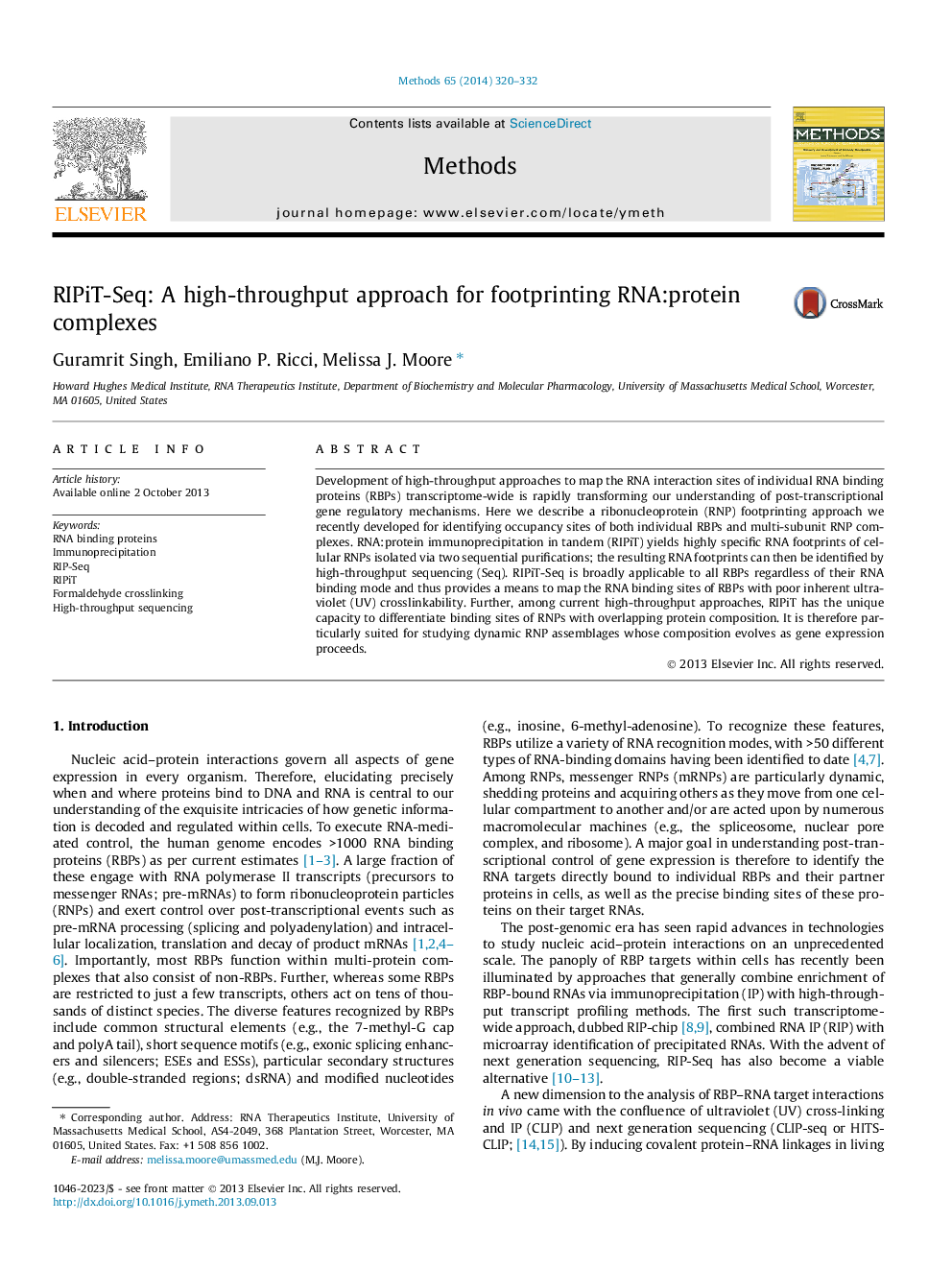| Article ID | Journal | Published Year | Pages | File Type |
|---|---|---|---|---|
| 10825755 | Methods | 2014 | 13 Pages |
Abstract
Development of high-throughput approaches to map the RNA interaction sites of individual RNA binding proteins (RBPs) transcriptome-wide is rapidly transforming our understanding of post-transcriptional gene regulatory mechanisms. Here we describe a ribonucleoprotein (RNP) footprinting approach we recently developed for identifying occupancy sites of both individual RBPs and multi-subunit RNP complexes. RNA:protein immunoprecipitation in tandem (RIPiT) yields highly specific RNA footprints of cellular RNPs isolated via two sequential purifications; the resulting RNA footprints can then be identified by high-throughput sequencing (Seq). RIPiT-Seq is broadly applicable to all RBPs regardless of their RNA binding mode and thus provides a means to map the RNA binding sites of RBPs with poor inherent ultraviolet (UV) crosslinkability. Further, among current high-throughput approaches, RIPiT has the unique capacity to differentiate binding sites of RNPs with overlapping protein composition. It is therefore particularly suited for studying dynamic RNP assemblages whose composition evolves as gene expression proceeds.
Related Topics
Life Sciences
Biochemistry, Genetics and Molecular Biology
Biochemistry
Authors
Guramrit Singh, Emiliano P. Ricci, Melissa J. Moore,
